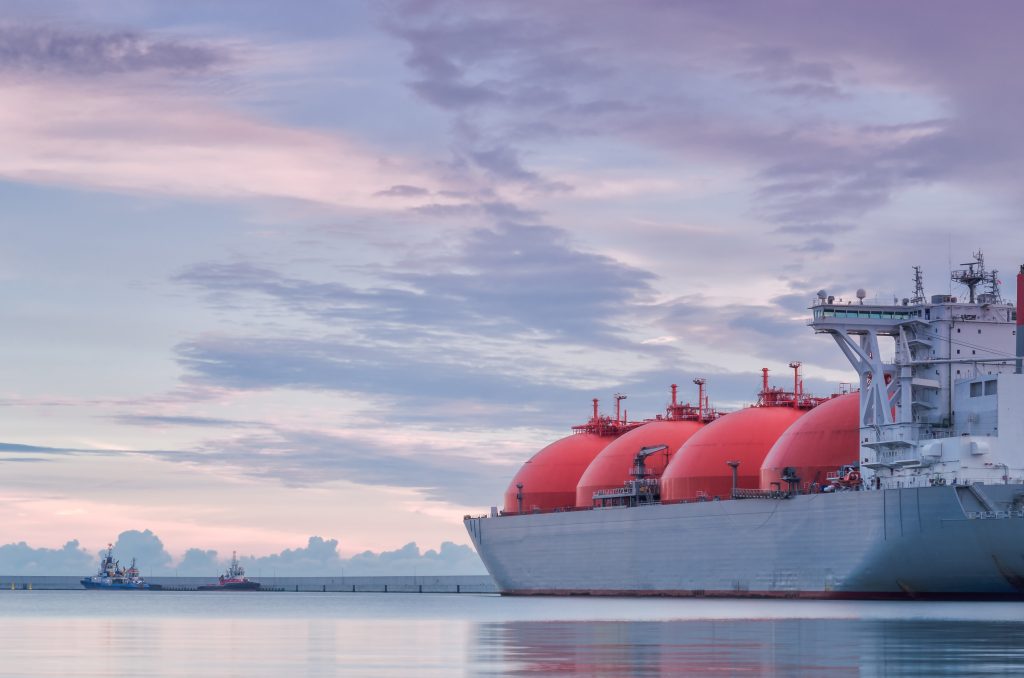Natural Gas Trades
Natural gas has come into focus early in 2022 due to shrinking global supplies, the onset of winter in the Northern Hemisphere and rising geopolitical tensions in Europe.

While cryptocurrencies and non-fungible tokens (NFTs) continue to captivate market pundits, the energy sector was quietly one of the strongest corners of the financial markets in 2021.
Case in point, Bitcoin (BTC) gained 60% in value last year, but natural gas achieved the exact same return (up 60%), and crude oil wasn’t far behind (up 57%).
The natural gas trade has been especially interesting recently, as several worldwide factors appear to be providing the commodity with a firm bid in terms of market strength and attention.
In a nutshell, those market factors involve shrinking global supplies, the onset of winter in the Northern Hemisphere and rising geopolitical tensions in Europe. And on any given day, news developments involving any one of those three stories can have a significant impact on natural gas prices.
Of course, supply and demand are critical factors for any product or service, especially for a key global commodity such as natural gas. In the U.S., for example, natural gas made up 34% of the total energy consumption in 2020, and was the primary source of electricity generation.
So with natural gas in short supply, it hasn’t been a shock to see prices move higher. Last year, natural gas supplies in the U.S. were roughly 7% lower than the 5-year average. And the situation in Europe has been even more critical.
In 2021, supplies of natural gas in Europe were almost 20% below their 5-year averages. As a result, Europeans have been paying a much higher rate than Americans for natural gas—roughly four times as much, by some estimates.
Source: Fortune.com
Considering global price spikes like the one illustrated above, it shouldn’t come as much of a surprise to hear that natural gas producers in the U.S. have started focusing on the export market.
That trend even pushed the U.S. into the world’s top spot when it comes to exporting liquified natural gas (LNG). In December of 2021, LNG exports from the U.S. topped 7.7 million tons—narrowly edging out the world’s other top exporters, Australia and Qatar.
Natural gas is a critical energy commodity in the world economy because it is used heavily for cooling and heating homes and businesses. Looking ahead, that means the relative severity of the 2022 winter season will play a key role in deciding where prices go from here.
As one can see in the chart below, natural gas demand historically spikes during the winter season, which often results in an associated spike in price, too.
Source: EIA.gov
And beyond the weather, the winter of 2021-22 is especially interesting for the energy sector as a result of rising geopolitical tensions in Europe. Over the course of the last couple months, Russia has amassed more than 100,000 troops on its shared border with Ukraine.
While this aggressive posture may only represent a negotiating tactic with the West, there’s widespread fear that Russia could in fact conduct an all-out invasion of Ukraine at some point in the next couple months. That act would represent an extreme escalation in the long-simmering “Russo-Ukrainian War,” which to date has been limited to eastern Ukraine.
Considering Russia’s critical role in supplying the world with energy commodities, such a move would also undoubtedly impact energy prices—although exactly how is up for debate. Western Europe relies heavily on Russian natural gas during the winter heating season, and that reality could also have a big impact on western Europe’s ability to get heavily involved in the conflict—from a military or diplomatic perspective.
A previous Luckbox article outlined how a potential escalation of this conflict could easily turn into a so-called “black swan” for the global financial markets.
To learn more about the dynamics of the natural gas trade, readers can also review this recent installment of Options Jive on the tastytrade financial network.
To follow everything moving the financial markets in 2022, readers can also tune into TASTYTRADE LIVE—weekdays from 7 a.m. to 4 p.m. CST—at their convenience.
Sage Anderson is a pseudonym. He’s an experienced trader of equity derivatives and has managed volatility-based portfolios as a former prop trading firm employee. He’s not an employee of Luckbox, tastytrade or any affiliated companies. Readers can direct questions about this blog or other trading-related subjects, to support@luckboxmagazine.com.



















